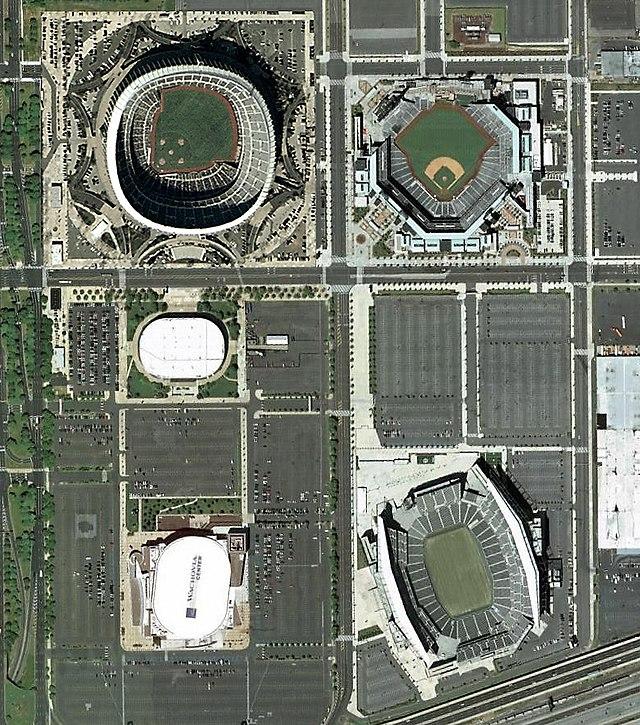South PhiladelphiaŌĆÖs Stadium District Poised for Major Urban Renewal
Comprehensive Redevelopment Plan to Revitalize the Stadium District
South PhiladelphiaŌĆÖs Stadium District is on the cusp of a significant makeover, following the announcement of an extensive redevelopment initiative by a leading real estate developer. This visionary project seeks to rejuvenate the neighborhood surrounding the famed sports complex by integrating residential, commercial, and leisure facilities into a cohesive, modern urban environment. The plan includes the construction of more than 1,200 housing units, with a strong emphasis on affordable living options to foster a diverse and inclusive community. Additionally, the development will introduce cutting-edge office spaces and vibrant retail areas designed to attract visitors year-round, extending the districtŌĆÖs appeal beyond sporting events.
Local leaders and community members have highlighted several anticipated advantages:
- Employment opportunities: Approximately 3,000 jobs spanning construction and permanent roles
- Enhanced public amenities: New parks, plazas, and pedestrian-friendly zones
- Improved transportation: Upgraded transit facilities and expanded bike lanes
Outlined below is the phased schedule for the projectŌĆÖs rollout:
| Phase | Timeline | Primary Activities |
|---|---|---|
| Phase 1 | 2024 – 2025 | Land preparation and infrastructure enhancements |
| Phase 2 | 2025 – 2027 | Development of residential complexes and retail outlets |
| Phase 3 | 2027 – 2029 | Construction of office buildings and creation of green spaces |
| Phase 4 | 2030 | Final development stages and establishment of community centers |
Economic Growth and Workforce Expansion Through Development
The redevelopment of the Stadium District is projected to inject over $500 million into the local economy, sparking growth across multiple sectors including retail, hospitality, and services. This influx of capital is expected to boost small businesses by increasing customer traffic and attract prominent national and international brands, thereby elevating the districtŌĆÖs status as a thriving commercial hub.
Employment generation is a cornerstone of the project, with forecasts indicating thousands of construction jobs during the build phase and a substantial number of permanent positions once completed. These roles will cover a broad spectrum of industries such as construction trades, retail, food and beverage services, and facility operations. The anticipated job distribution is as follows:
- Construction and Skilled Labor: Over 2,000 temporary jobs
- Retail and Hospitality: More than 1,200 full-time positions
- Facility Maintenance and Management: 500+ ongoing roles
| Sector | Job Count | Employment Type |
|---|---|---|
| Construction | 2,000+ | Temporary |
| Retail & Hospitality | 1,200+ | Permanent |
| Facility Management | 500+ | Permanent |
Addressing Community and Environmental Challenges
Concerns from residents and environmental advocates have prompted developers and city officials to implement comprehensive strategies aimed at reducing the projectŌĆÖs environmental impact and safeguarding community interests. These initiatives include:
- Integration of green spaces: Expanding parks and creating tree-lined walkways to support local ecosystems and provide recreational areas.
- Mitigation of noise and traffic: Installation of advanced sound barriers and optimized traffic management systems to minimize disruptions during events.
- Ongoing community involvement: Establishment of regular public meetings and a dedicated advisory board to maintain transparent communication between stakeholders.
| Issue | Mitigation Strategy | Anticipated Result |
|---|---|---|
| Air Quality | Use of low-emission machinery and expanded green buffers | Enhanced air quality standards |
| Stormwater Management | Implementation of permeable surfaces and rain gardens | Decreased flooding and water pollution |
| Safety | Improved lighting and increased community policing | Reduction in nighttime crime rates |
Strategies for Equitable Development and Environmental Stewardship
To maximize the benefits of the Stadium District redevelopment, it is essential to adopt an inclusive and sustainable planning approach. Prioritizing affordable housing alongside market-rate units will help prevent displacement and encourage a socioeconomically diverse population. Furthermore, designing accessible public spaces and enhancing pedestrian connectivity will ensure the neighborhood serves residents of all ages and abilities. Active engagement with local communities through transparent forums will foster collaboration and trust.
Environmental responsibility should be a guiding principle throughout the project. Incorporating energy-efficient architecture, renewable energy technologies such as solar panels, and advanced stormwater systems will reduce the ecological footprint. Key recommended strategies include:
| Approach | Details |
|---|---|
| Mixed-Use Development | Blending living, working, and leisure spaces to create a dynamic urban environment |
| Transit-Oriented Design | Improving access to public transportation to reduce reliance on cars and lower emissions |
| Green Infrastructure | Incorporating parks, green roofs, and permeable pavements to manage environmental impact |
| Community-Focused Planning | Developing amenities that reflect the needs of diverse populations |
| Energy Conservation | Utilizing solar energy and LED lighting to enhance sustainability |
Looking Ahead: The Future of the Stadium District
As the redevelopment of South PhiladelphiaŌĆÖs Stadium District advances, residents, business owners, and city officials will closely monitor its progress and impact. The project promises to stimulate economic vitality, upgrade infrastructure, and enrich community life, marking a pivotal chapter in the districtŌĆÖs evolution. Upcoming public consultations and updates will provide opportunities for continued dialogue and collaboration, ensuring the development aligns with the aspirations of all stakeholders. Follow PHILADELPHIA.Today for ongoing coverage of this transformative initiative.








